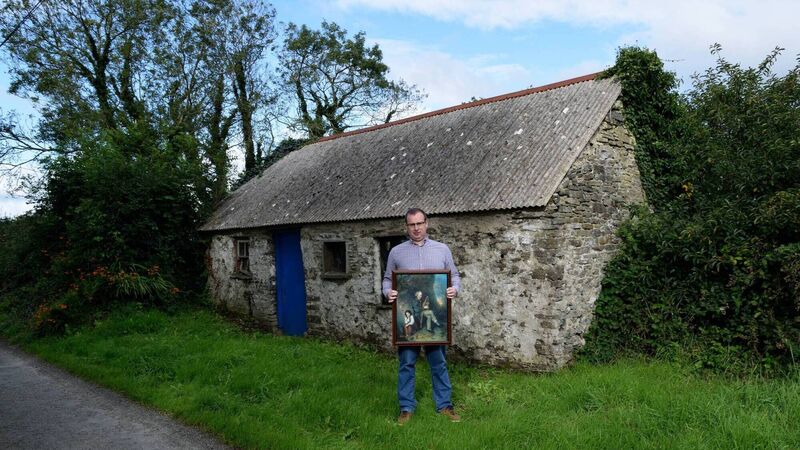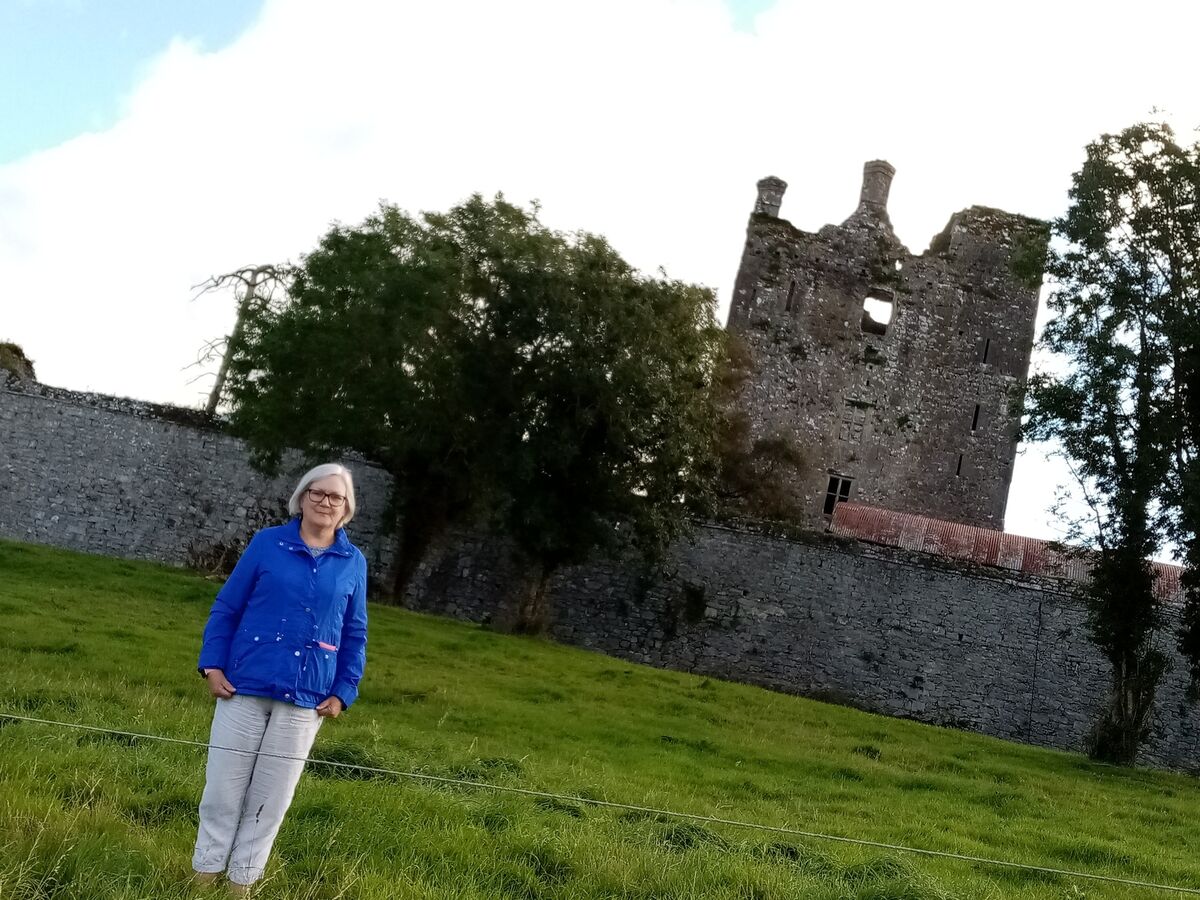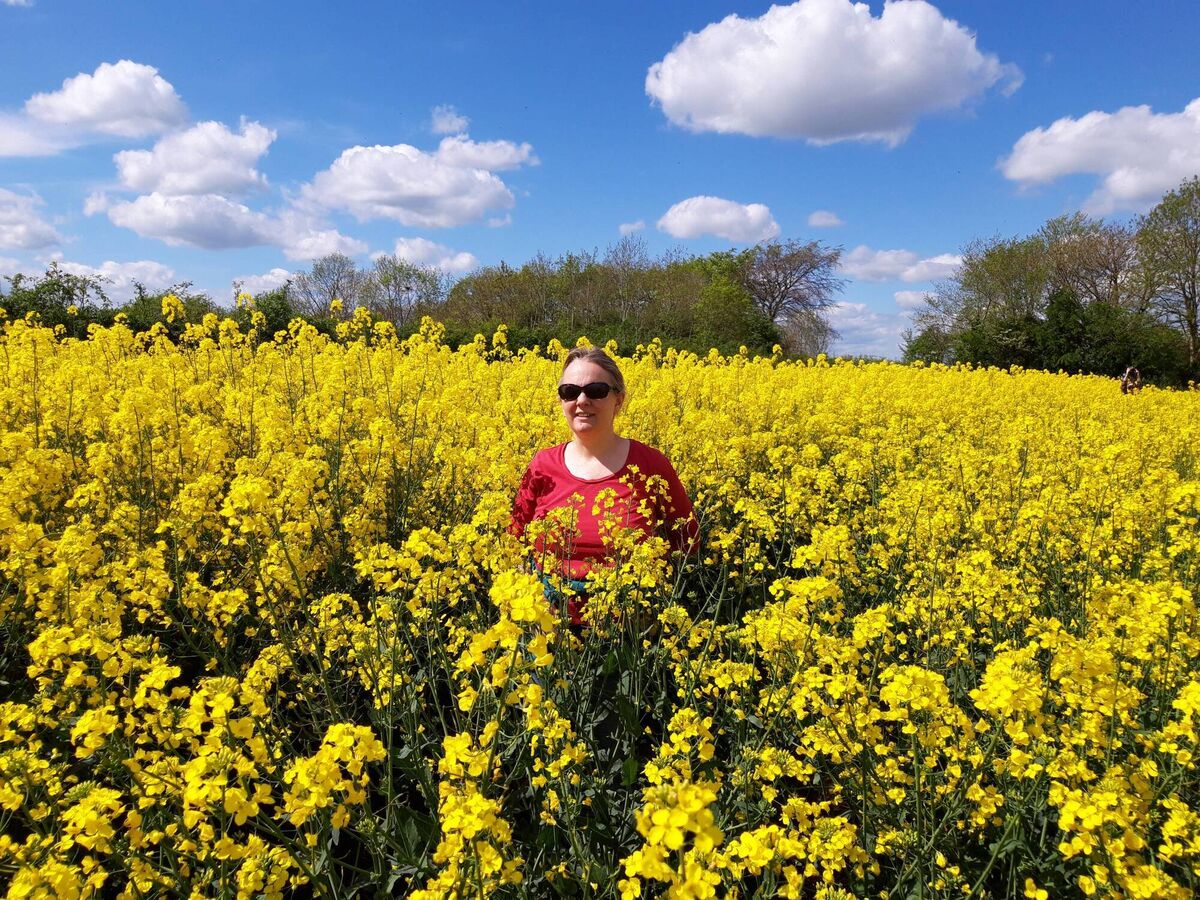Know Your 5K project helps us discover our local hidden heritage

Stephen McDonagh with a photo of the piper Pádraig Ó Briain at the site where the piper was born at Labasheeda, Co Clare. Picture: Bruce Dietz.
Passionate about Irish history and heritage, secondary schoolteacher Stephen McDonagh, 35, spent lockdown in Labasheeda, Co Clare with his parents, who were cocooning. During the lockdown, Stephen worked for his community, monitored the lesser horseshoe bat for the National Parks & Wildlife Service, and applied for teaching jobs.
“I’m from the same townland as the piper, Pádraig Ó Briain. He’s the subject of one of the most famous 19th-century paintings, done by Joseph Patrick Haverty, a copy of which hangs in the National Gallery. The site of the house where he was born is just 100 yards back the road from my house.
“Ó Briain moved to Limerick aged 26 [around 1799], having become blind. He was hoping for a position as an entertainer in one of the big houses but he didn’t even succeed in finding a patron to appreciate his music. He was forced to become a street musician — records show he became a familiar figure at the corner of Hartstonge Street and The Crescent.
“This whole Clare side of his story had long been forgotten.
“I like that he overcame all these hardships to become the famous figure in the painting, 'The Limerick Piper'. He died almost 170 years ago. His association with Labasheeda would’ve been lost if it hadn’t been passed down through the folklore of our village, told through the generations. It testifies to the importance of oral history.”

“Knockelly Castle, Fethard, Co Tipperary was my saviour during lockdown,” says Mollie Standbridge. In her early 60s, Mollie started lockdown early because she had to self-isolate after attending Cheltenham.
“Knockelly Castle’s only a mile back the road from my home. It’s a hilly walk, so a great workout! You can see for miles around. I discovered a pair of kestrels nesting there in June. One day, two of them were sitting up on the edge of the castle roof, eating their kill. Another day I saw three flying around.
“The castle’s in fairly decent condition. There’s a love story associated with it. In the late 1600s, a British soldier, Robert Jolley, and an orphan girl, Ellen Meagher, fell in love. But Robert was sent abroad and Ellen went to London as a ladies’ companion. She took the eye of an extremely wealthy gentleman who offered her his hand in marriage and all his worldly goods if she gave him an heir. She became a very wealthy young widow not long afterward.
“One day, she came across the now Captain Jolley. They renewed their friendship, she bought out his commission, and they married and returned to live in Knockelly Castle — they had three daughters.
“Anyone I tell loves that story. We’re all romantics at heart. It shows love wins out. After a tough start, losing her parents and her first love, she went on to live a long, happy life with him.”

Cocooning in a small, gardenless second-floor apartment in Ballinacurra, Co Cork, Angela Gallagher, 72, felt shut-in. “I nearly went crazy. Out my window, I could see the tops of people’s heads. I didn’t see faces for weeks.
“I exercised every day from 12-1pm, marching from my living room, into the first bedroom, up the hall into the next bedroom, back to the kitchen and around to the coffee table where I’d started. It was 110 paces — I was surprised to find I’d walk 20km in a week. I gave Age Action €1 for every kilometre I walked.
“So my mind wandered to great open spaces with nobody in them. I’m from Donegal originally and when I heard about Know Your 5K, I thought of my home parish. I grew up knowing about this beautiful, very remote An Óige Hostel.
“Robert died but his widow continued to visit the area. In 1910, thinking about the poor locals who had to endure a two-hour walk in all weathers to get to the Catholic chapel, she had a Cross erected near the lodge. But Canon Gavigan refused to bless the cross or have anything to do with it.
“In 1937, the lodge was handed to the emerging An Óige and it’s used as a youth hostel — the only Lutyens Building in Ireland in which you can sleep! The Cross and the Lodge are at Dundoan Lower, near Trá na Rossan beach.”

Mum of teenagers and editor of Archaeology Ireland Magazine, Sharon Greene missed “meeting people in 3D” during the lockdown, but counted her blessings, chief of which is her south County Kildare location surrounded by fields.
“On the farm where I grew up, there’s a field called Poulgorra, bought by my grandfather in the 1950s. He didn’t know what the name meant, so he made up a story that my father handed down to me.
“He explained that thinning turnips was a labour-intensive job, that one day a workman looked up to see a vision of Saint Paul walking across the field and he exclaimed ‘Paul, begorrah!’ So the field was known as Paulgorra.
“Years later I began wondering about the name’s real origin. The answer came by chance, in an article that explained this field name originated in the tradition of leaving a corner of a field un-mown for the hare. The Irish name is ‘pol na ngiorria’ – meaning ‘hole/hollow of the hares’.
“It’s interesting an Irish name survived, surrounded by names like ‘the high field’, ‘the fox cover’, ‘the mill park’, ‘the bullock park’, even though its meaning had been forgotten.”
Know Your 5K is an initiative from the Heritage Council and the National Museum of Ireland. Find out more at Know your 5k







